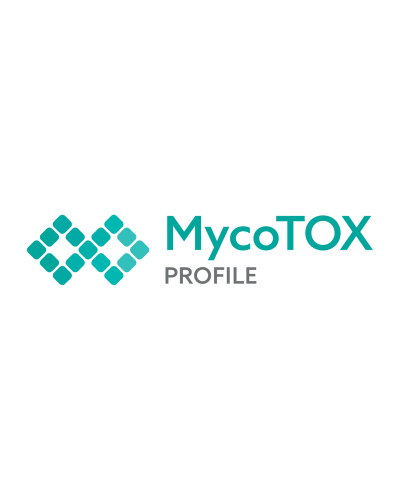MycoTOX Profile (Mold Exposure)
- Brand: Mosaic Diagnostics - Testing
- Product Code: GPL029
- Availability: In Stock
-
$430.00
- Ex Tax:$430.00
Insight Into a Growing Health Threat
Mycotoxins, produced by certain mold species, are some of the most prevalent toxins and can come from many sources including buildings, vehicles, and food. These compounds have been recognized as a growing global health concern due to their acute and chronic adverse health impacts. Mycotoxin exposure can be difficult to diagnose without proper testing due to vague and often varied symptoms.
The MycoTOX Profile is Mosaic Diagnostics’ most comprehensive assessment of mycotoxins. Our urine-based assay assesses levels of 11 different mycotoxins, including Aflatoxin M1, Ochratoxin A, Zearalenone, and Trichothecenes. The MycoTOX Profile has been designed to support clinicians uncover mycotoxin exposure – and guide a therapeutic strategy for prevention and treatment.
Sample Reports
The MycoTOX test report is a useful resource for practitioners who want to gain valuable insights into the underlying causes of illnesses.
Test Prep and Instructions
MosaicDX offers patient-friendly sample collection kits that simplify testing. Our kits include visual, step-by-step instructions for test preparation and sample collection, personalized shipping cards, and pediatric collection bags if needed. With MosaicDX, patients can easily collect samples for testing with confidence and accuracy.
What Patients Might Benefit from the MycoTOX Profile?
Exposure to molds can negatively impact health either directly due to inhalation or dermal contact with mold or mold spores – or secondarily due to the concomitant presence of their secondary metabolites, mycotoxins.
Symptoms and disease states that have been associated with mycotoxin exposure include the following:
- Alzheimer’s
- Anxiety/Depression
- Asthma
- Autism
- Bronchitis
- Cancer (e.g., Hepatic, Esophageal)
- Chronic Fatigue
- Cognitive Impairments
- Headaches
- Infertility
- Inflammatory Bowel Disease
- Intestinal Permeability
- Multiple Sclerosis
- Other Mood Impairments
- Parkinson's Disease
Details
Why Test for Mycotoxins?
Mycotoxins are prevalent environmental toxins produced by certain mold species and can come from many sources including buildings, vehicles, and foodstuffs, causing serious acute and chronic health effects. The MosaicDX MycoTOX Profile is a state-of-the-art urine-based assay that accurately detects 11 different mycotoxins, including Aflatoxin M1, Ochratoxin A, Zearalenone, and Trichothecenes.
Since mycotoxin exposure can manifest in various and ambiguous symptoms, proper testing is essential for accurate treatment. Our test is specifically designed to help healthcare practitioners identify mycotoxin exposure and guide a targeted prevention and treatment plan.
How Does the MycoTOX Profile Measure Mycotoxins?
The MycoTOX profile utilizes state of the art liquid chromatography tandem mass spectrometry (LC-MS/MS) technology to ensure high specificity (or fewer false positive results) and capture free (unconjugated) mycotoxin presence even at low levels, this is crucial as mycotoxins, even at low levels of exposure, can cause serious health problems. Our test is so sensitive that we can detect amounts of many compounds in parts per trillion (ppt). To account for variations in fluid intake, we utilize creatinine correction to ensure accurate and reliable results. By utilizing LC-MS/MS technology, we can precisely identify all our analytes, reducing the risk of false positives. With the MycoTOX Profile, you can trust that you are receiving the most accurate and reliable results possible.
Analytes
The MycoTOX urine-based assay assesses levels of 11 different mycotoxins.
Below is a list of all all analytes included in the test along with a brief description.


